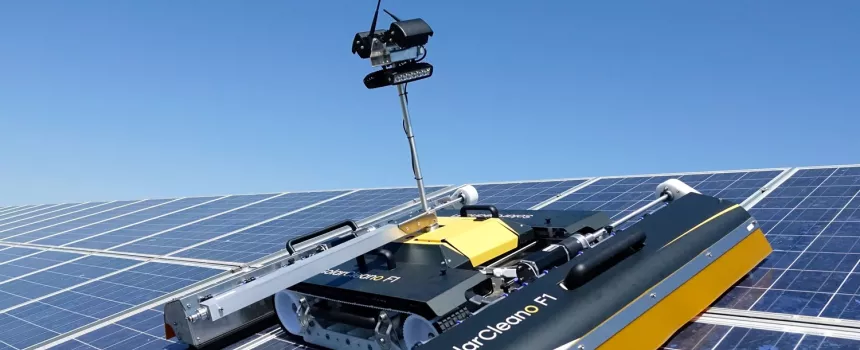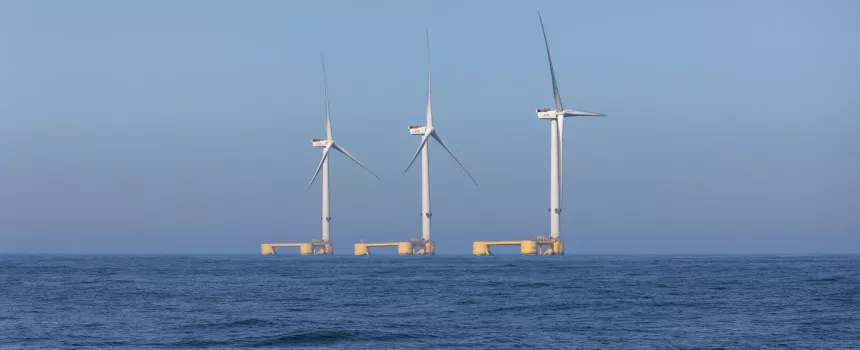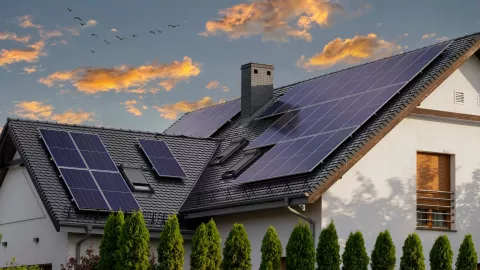Floating PV is a growing technology, due to its hybridization and technological potential. EDP NEW as the Research & Development Centre for EDP has been at the forefront of this technology with involvement in the Portuguese pilots.
Floating PV is a relatively young niche within traditional PV technology, however, it has been growing rapidly globally, from the first floating PV projects in 2006 to the installed capacity of 3 GWp in April 2022 and with a prediction of 10 to 30 GW expected installed capacity by 2030. Floating PV presents multiple technological advantages. It utilises otherwise unused areas, while the contact with water enhances the efficiency of PV installations through water cooling effects, thereby optimizing peak power efficiency. Additionally, it facilitates the hybridization of electricity grids, leveraging underutilized grid infrastructure.
Within EDP, this research began with a pioneering project at a European level, a floating photovoltaic solar power plant, on the Rabagão river reservoir, in Montalegre, which tested the complementarity between solar energy and hydropower, as well as the environmental and economic advantages of this new technology. This test site, owned and operated by EDP Generation, was chosen due to the technical difficulties that it presents since it’s a reservoir within a deep valley with rocky soil and significant elevation variations, which allowed for the testing of mooring solutions. This pilot culminated with 840 solar panels occupying an area of 2500 m2, the platform, with an installed capacity of approximately 220 kWp and an estimated annual production of around 300 MWh.

In July 2022, EDP Generation inaugurated the new floating solar photovoltaic power plant in Alqueva, catalysed by the ground-breaking European project, FreShER. The Alqueva floating solar photovoltaic plant is today the largest floating solar plant in Europe on a reservoir: with around 12 thousand photovoltaic panels and an annual production capacity of 7.5 GWh, it supplies approximately 1500 families in the Portel and Moura region, which corresponds to 25% of the consumers in the region. Alqueva has thus become a kind of living laboratory, by allowing the complementarity between dispatchable (hydroelectric) and non-dispatchable (photovoltaic) renewable energy production technologies to be tested, as well as long-term energy storage technologies (pumping) and short-lived (battery). With the power of 1MW and storage capacity of around 2MWh, the battery uses lithium-ion technology, which is already widely used in the electrical sector globally. The pumping system allows to use wind and solar energies, in periods of lower consumption, to pump water from the reservoir and, in this way, reuse it to produce new hydroelectric energy.
At EDP NEW, besides the more “traditional” floating PV installations in rivers, we have been studying the defying roll-out to offshore environments, namely in the EU-SCORES project, where a 3 MW grid-connected offshore solar PV system by Oceans of Energy is being installed at 2 km off the Belgian coast at the Blue Accelerator test site.
Alqueva floating solar power plant in numbers
- Number of panels: around 12,000
- Platform dimensions: 4 ha
- Installed Power: 4 MW
- Annual energy production: 7.5 GWh (1,500 of families in the region)
- Reservoir depth: 70 m
- Water plane oscillation: 23 m
Continue reading

Robotics and AI in renewables and O&M


